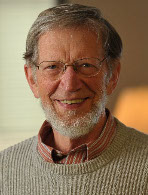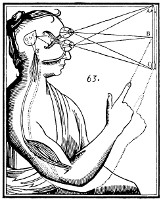Today, at the conclusion of what was probably New Zealand’s most closely followed murder (re)trial ever, David Bain was found not guilty of killing his parents and three siblings in Dunedin in 1994.
I don’t quite know what I think about whether or not David did it. “What?” you might say. “But the court found that he didn’t do it!” No, actually it did not. I want to stress before writing this that I’m not saying he did it. Maybe – and hopefully – he didn’t. But this high profile case does present the opportunity to correct a mistaken, although widely held, view of exactly what a “not guilty” verdict really is. There’s a common belief afoot that when a court declares a person “not guilty,” they are making the claim about history like this: “It’s a fact that this person did not do what he is accused of.” Some media outlets perpetuate this belief. For example in the news article linked above, we read, “Bain spent 13 years in jail for a crime the jury took five hours and 50 minutes to decide he didn’t do.”
Although common, this view of a not guilty verdict is mistaken. Yes, a person is regarded (presumed) by law as innocent until proven guilty, so the law will treat people who are found not guilty as innocent people – as it certainly should. They will still be presumed innocent by the law. But there is a difference between legally declaring a person not guilty and stating that it has been proven that they did not do what they are accused of.
In the Scottish court, a third verdict is available – “not proven.” In our court, only two are available: Guilty or not guilty. Guilty means that the evidence establishes that the person has committed the offence in question. Our broader “not guilty” verdict actually encompasses both the Scottish “not guilty” as well as the Scottish “not proven.” “Not proven” itself also encompasses both of these, since when a person is deemed “not guilty” the case against them is deemed “not proven.” The upshot of all this is that when our courts find a person “not guilty,” they are actually commenting on the case for their guilt, not on the facts of history.
If this seems a little odd to you, think of it in logical notation. In such notation the symbol ~ means “not” or “it’s not the case that.” Let G = Guilty, which means “the prosecution has established that this person committed the crime.” “Not guilty” is ~G, which means “it’s not the case that the prosecution has established that this person committed the crime.” Many members of the public aren’t aware of this, and they wrongly assume that ~G means “it is the case that the defense has established that this person did not commit the crime.” But this is not contained in either ~ or G.
Legal experts concerned about the public perception of high profile cases have been expressing this concern for some time. In 1994 Lord Donaldson advocated that Britain adopt the “not proven” verdict instead of “not guilty,” precisely because “not guilty” gives the misleading impression that the court has found a person to be innocent. “[t]he verdict of ‘not guilty’,” said Donaldson, “says nothing about innocence. It simply says that the jury was not wholly sure that the accused committed the crime.” Bear in mind after all, in order to find a person not guilty, all the defense has to do is introduce reasonable doubt. In case there was any room for doubt as to his meaning, Donaldson says again: “The only real issue for the jury is whether they are sure the accused is guilty. Whether he is innocent or not is irrelevant for their purpose, and it is a pity that this is generally not understood.” [The Mail on Sunday, 4th Sept 1994, my birthday, incidentally]
It has been established that it has not been established that David Bain committed these murders. Is he innocent? I hope so, and I certainly have no basis for treating him as guilty.
Glenn Peoples



 Here it is, part two of the series on philosophy of mind, In Search of the Soul. In this episode I introduce the viewpoint called emergentism, and I explore the argument for dualism from free will.
Here it is, part two of the series on philosophy of mind, In Search of the Soul. In this episode I introduce the viewpoint called emergentism, and I explore the argument for dualism from free will.
